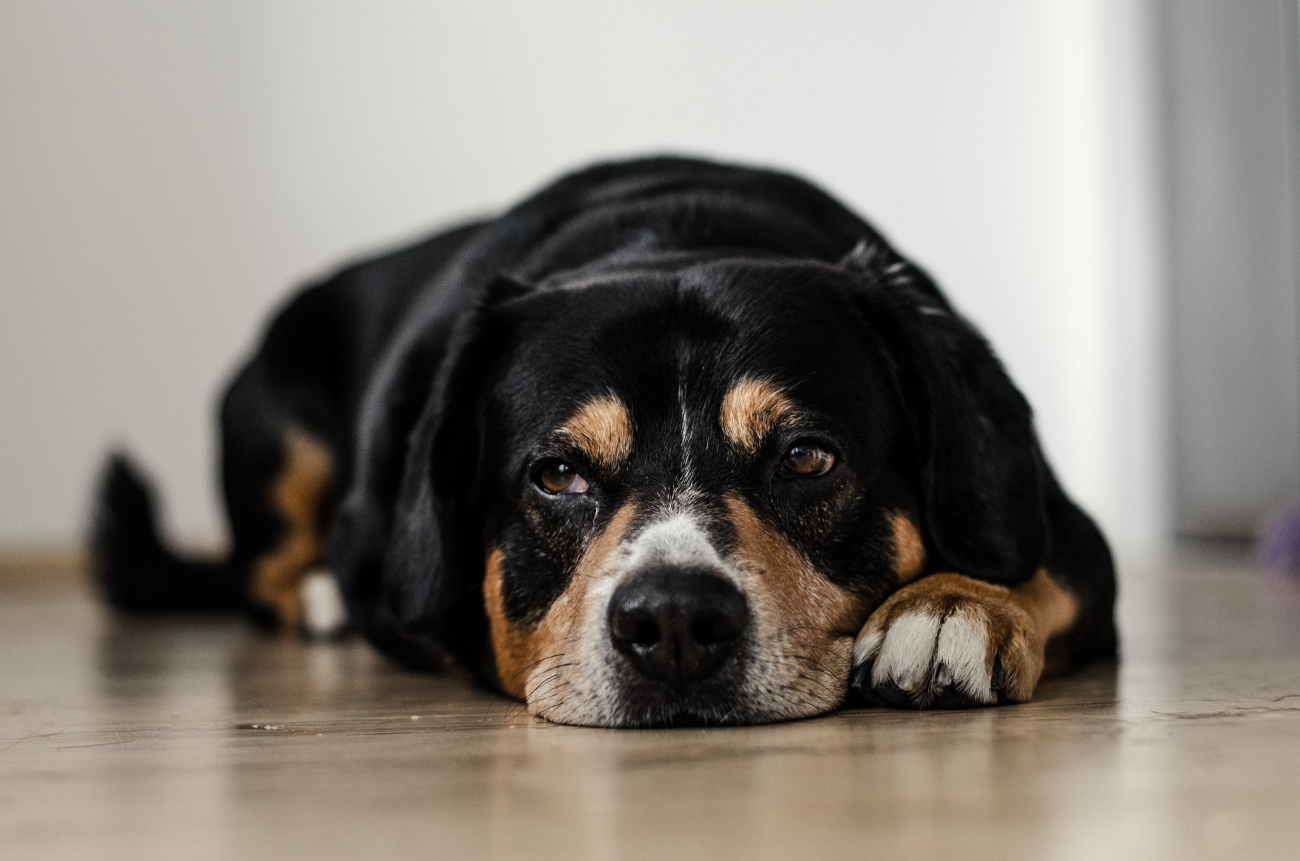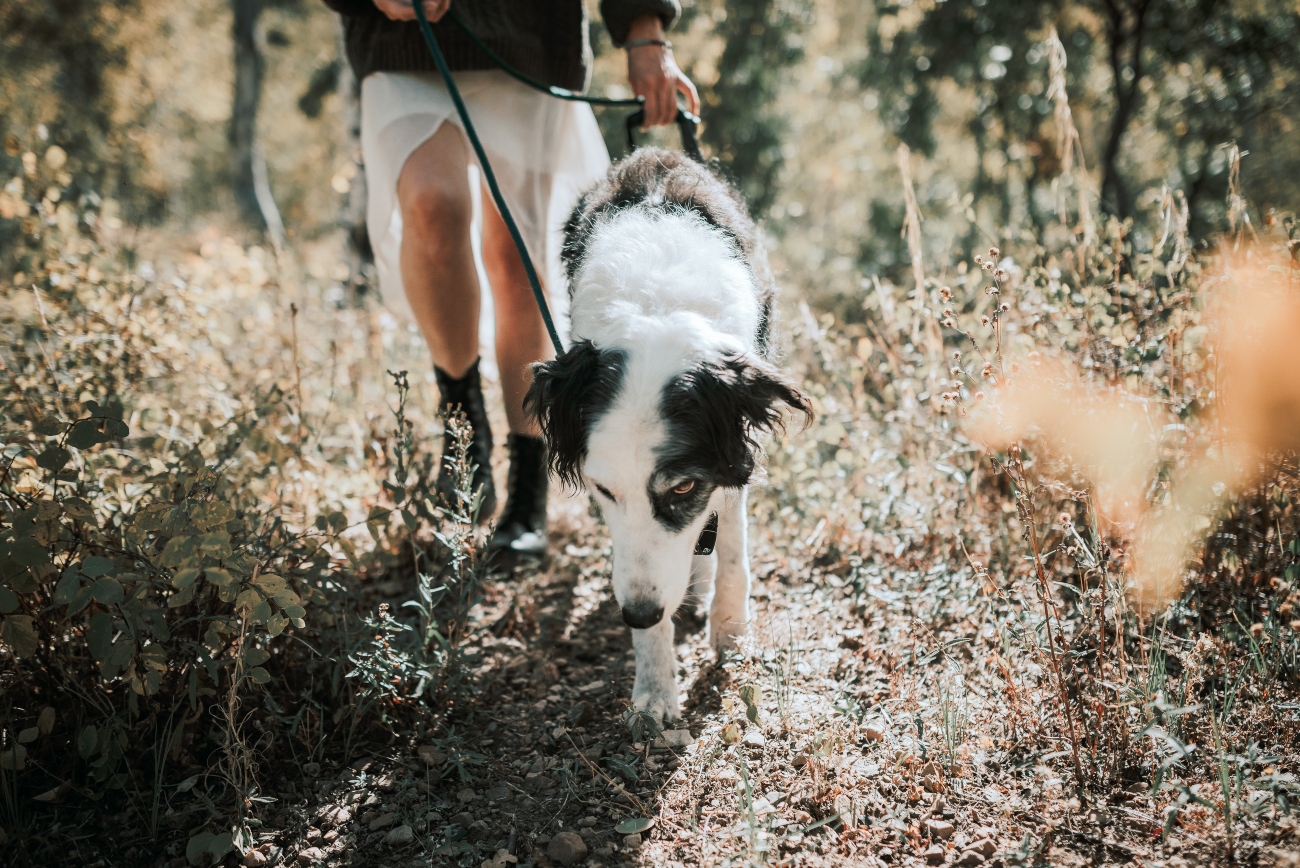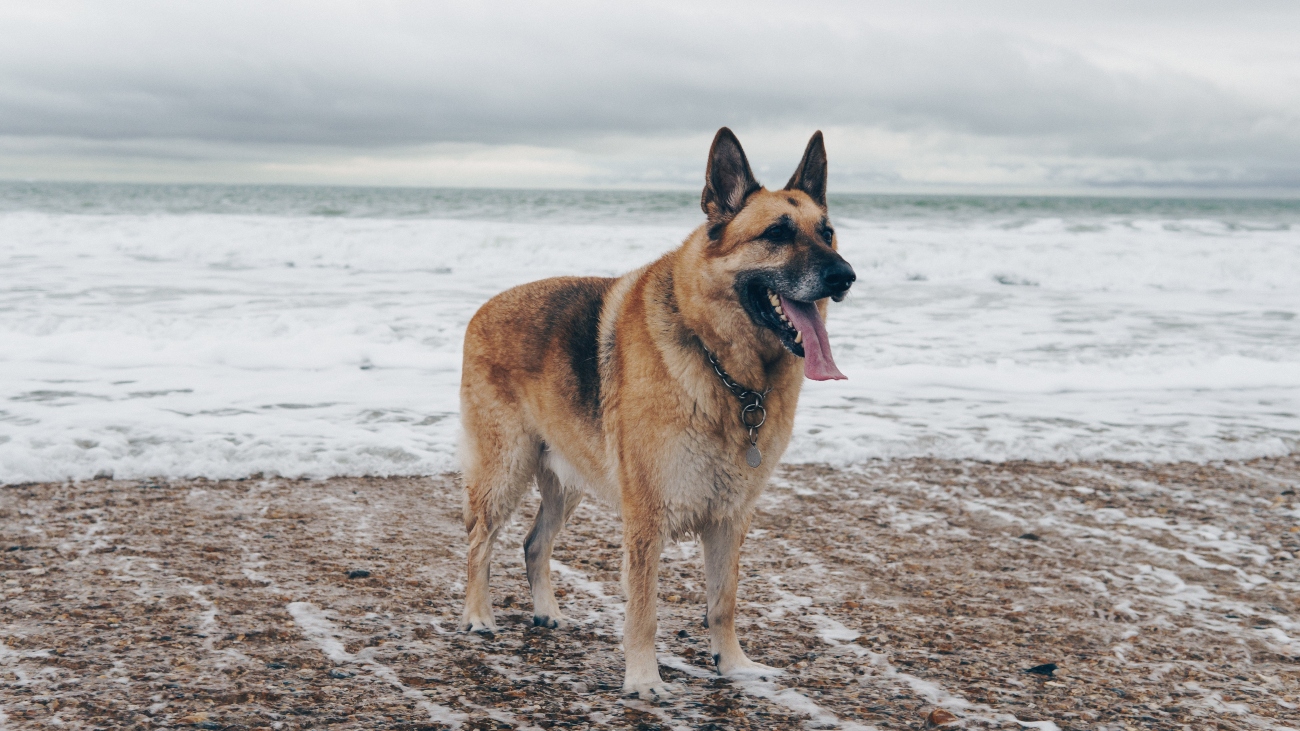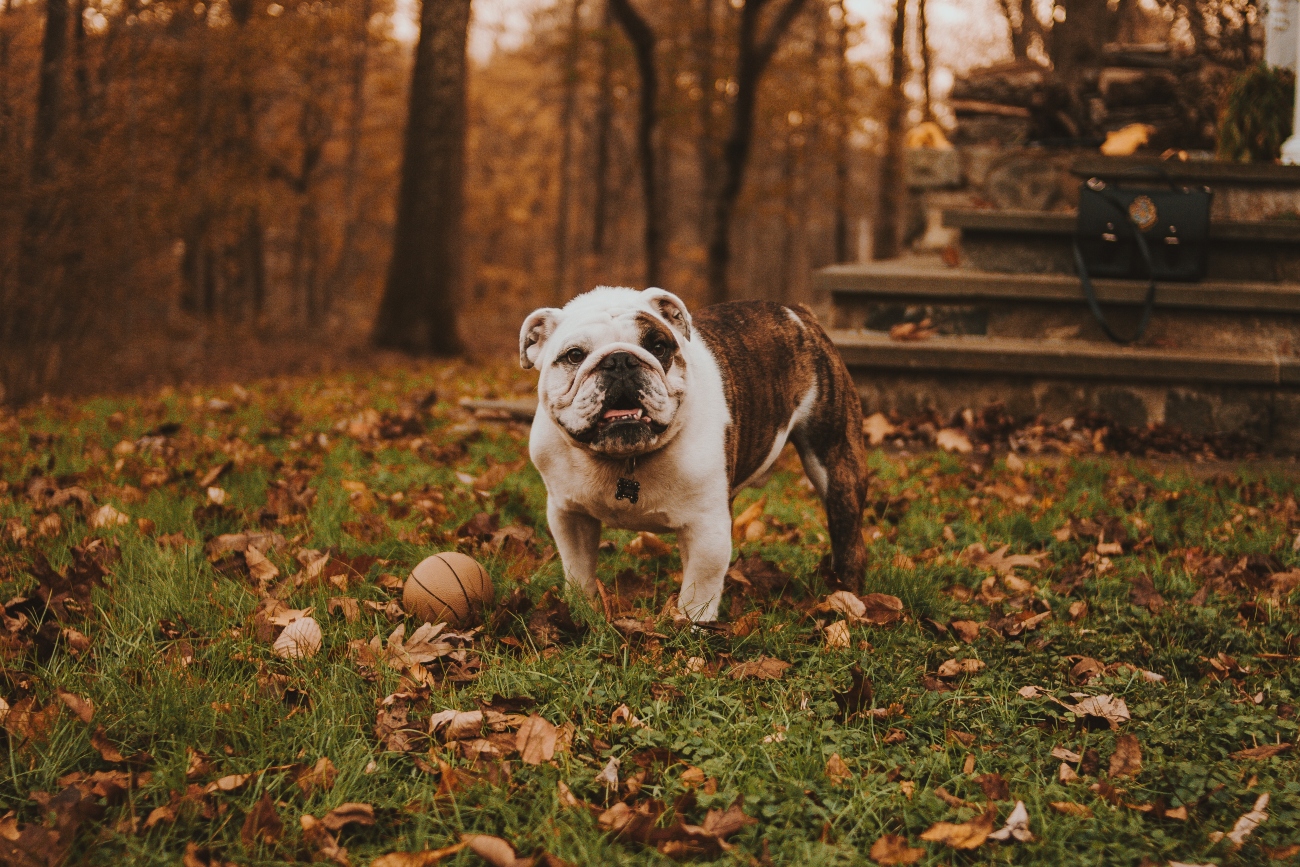
Best exercises for older dogs
15th October, 2021
As your beloved dog gets older, the question of how much exercise they need should be handled carefully. On the one hand, older dogs will be more prone to health conditions and long-term injuries. These may either make exercise difficult for them, restrict how much they are able to do, or perhaps even lessen their enjoyment. Your older dog will tend to slow down a little, and will probably need more rest stops.
That being said, it's still very important to keep older dogs reasonably active. Yes, they may want to drop the pace a little and include a few more rest stops, and that vigorous game of chase that they once loved may have lost some of its appeal. However, it's still important to keep older dogs active, in order to keep them in the best possible state of health. This is often, in fact, more crucial for older dogs than for their younger counterparts.
Regular exercise will strengthen an older dog's muscles and keep their joints healthy – which is important because, as dogs age, their metabolism can slow down. This means they’re more likely to put on weight which will place stress on those joints. So keeping the weight off, and the joints healthy and active, are a key part of helping to provide your older dog with a happy, healthy and comfortable life.
However, if your older dog appears to be losing weight rapidly, this could be a sign of something more serious.
Another part of that jigsaw is specialist senior dog insurance. This can provide you with some help with the vet's bills and medicines that are so often part of living with an older dog.

Getting the exercise levels right
So, a little exercise is an important part of your older dog's continued wellbeing. However, it's also a fact that, as dogs age, they can develop certain conditions that limit how much they can exercise or, in serious cases, can take exercise off the menu altogether.
Issues such as heart problems, deafness, and loss of eyesight can make exercise difficult – or even dangerous. Joint and mobility problems such as arthritis, meanwhile, can make that daily runaround much more stressful than it used to be. And Cognitive Dysfunction Syndrome, or 'dog dementia', can make exercise a challenge for both you and your pet.
Exercise is still recommended and, in most cases, should still be possible. It's a good idea, though, to monitor your pet's capacity for, and attitude to exercise as they get older. If they are having problems moving, or if the daily walk isn't the eagerly awaited treat it once was, it's worth paying a visit to the vet. It's quite possible that they will be able to help improve things, whether by introducing a medicine or lifestyle change that improves your dog's quality of life.
Top tips for exercising older dogs
Whatever your older dog is going through that's making exercise more difficult or less pleasurable, these steps can help.
Don't stop! Your pet may seem unable or unwilling to undertake the longer walks they used to love – but this shouldn't be a sign that you should give up walking altogether. Even if they can't cover the distance they used to, they'll still value – and need – all the things that go with a good walk: the chance to get outdoors, get some fresh air, explore the sights, sounds and scents, and to stretch their joints. You may just need to plan a shorter route than previously.
Little and often. Your dog may now need shorter bursts of gentle exercise – but they'll still need the same regularity as before. Those joints will stiffen if not exercised regularly – so dialling down the length, not the frequency, of exercise is the key here.
Watch the weather. Whereas, at one time, your dog would have bounded happily out of the house in all weathers, they may now be less willing to go out in certain conditions. Older dogs don't cope as well with extremes of temperature – either high or low – as they are not able to regulate their own temperature as efficiently as they could when they were younger. So, you might want to move your walk to a cooler time of day (early morning, late evening) in summer, and/or wrap your dog up in a suitable coat during the winter months.
Keep things familiar. Your dog's senses may not be quite as sharp as they once were, so it's a good idea to stick to familiar routes which won't alarm them and where they will know roughly what to expect around each corner.
Be on the alert. Similarly, older dogs with deteriorating sight or hearing will cope much less well with sudden movements (cars or bicycles coming up from behind, for example). The surprise factor will make for quite a stressful situation. Plenty of strokes and reassurance will help a lot here. And if your pet does run into an accident, pet insurance for older dogs can help cover the costs of emergency treatment.
Let your dog set the pace. Don't hustle your dog along at a speed faster than they are comfortable with: let them dictate the pace of the walk. If they give up the chase or lie down for a while, let them rest.
Stay indoors? If the weather doesn't look suitable, there are plenty of options for you and your dog indoors. Toys and indoor games will provide just the stimulus they need, and give you some good times together.
Check in with the vet. Discuss the amount and type of exercise you are doing, and see whether the vet thinks these are suitable for your dog's health and stage of life.

Exercise ideas for older dogs
Walking – an obvious one, but your dog will probably never lose their love of walking. Just tailor the length to suit them, and factor in plenty of rest stops.
Play – again, the pace may need to drop off a little, but your dog will still love a good play session. Those games they've always loved to play with you? You can still get them interested in these – you might just need to adapt them, making them a little gentler or slower, and involving less twisting and jumping.
Scent games – if their sense of smell is still functioning well, dogs will continue to love scent games. These games will keep both their mind and body active, and will keep them interested on quiet days. You can find a great selection of suggestions for scent games online.
Swimming – many dog breeds, such as Irish Water Spaniels, Newfoundlands and Labrador Retrievers, just love being in the water. And, while it might seem the kind of vigorous exercise you'd want to steer an older dog away from, swimming can be a great workout for aging canines, as it doesn't place any sore joints under the same strain as walking. Just make sure you let your dog dry off thoroughly as soon as they get back on land, so they don't catch a cold. Make sure that your chosen location and time of year are safe for swimming: there are some good water safety tips on the PDSA website. Be aware of any high sides to pools or lakes, which your older dog may struggle to climb when leaving the water.
Socialising – another activity that your dog will continue to enjoy into their later years. They may not be able to keep up with any racing or chasing games being played by younger dogs, and they may find the noisy, boisterous behaviour of puppies a bit stressful. So it's best, if possible, to seek out animals of a similar age and pace of life.
Training – dogs love to learn tricks and keep their brain active, and this will remain true in older age: all the more so if they are doing slightly less of those other activities they've always loved, such as vigorous exercise.
When training an older dog, it's good to use lots of positivity and patience. Your pet may find learning a little harder now, and be slower to catch on to new things – but he'll want to take on new challenges as much as ever. Just give him lots of time and encouragement and you will both get there.
Agility – with its particular physical demands of crawling, climbing and jumping, agility training is typically an activity aimed at younger dogs. But this needn't always be the case. You can modify a typical agility course to make it suitable for your older dog, keeping them at a good level of fitness and helping to burn off some of those calories that can so easily accumulate as they enter a more sedentary old age.
You can put together a course in your back garden, featuring a mix of hurdles, tunnels, seesaws and ramps. Just make sure the course is easy enough for your older pet – and that there's a reward waiting for them at the end!
How can I keep my old dog as mobile as possible?
Your dog may want to keep as active as ever through their later years, but they may be held back by mobility problems. This can be very frustrating for your pet, and difficult for you to watch. But there are things you can do to try to keep your dog as active as possible, and to ensure that they continue to enjoy a good quality of life.
1. Consulting with your vet about any treatments that might help them to retain or regain their mobility. Massage, hydrotherapy and physiotherapy can all be effective techniques in keeping older dogs supple and active. Think about the surfaces they are walking on. Both wood floors and tiles can make for slippery surfaces for an older, less sure-footed dog. Rugs or mats will provide them with the grip they need to walk more confidently and safely around the house. A larger senior dog may be struggling to walk – and you may struggle to help them. Look into some sort of support harness or sling for more comfortable walking.
2. Ramps around the house may be useful – for example, in helping them to get up and down steps from the garden, or into and out of the car.
3. One thing you might not have thought of is that your older dog may start to grow longer nails! This is because, as they are walking less, they are wearing those nails down a lot less. Make sure to keep an eye on nails and have them trimmed whenever they are getting a little long – you don't want to add to your dog's discomfort or reluctance to walk in any way.

How to make training fun for older dogs
When it comes to training, the carrot (well, the biscuit) is key, not the stick. Your training should be built around rewards for when your dog gets things right, not punishments for when they go wrong or are slow to catch on. This is a good maxim to keep in mind, in fact, when training a dog of any age.
Be relatively sparing with the treats, though. We all know that dogs love a food reward – but measure these out carefully, as they are often quite high in calories. Once again, that slower metabolism and less active lifestyle means that your senior pet will take longer to burn these off.
You can find more tips around exercise and training for older dogs elsewhere on our website.
Get specialist pet insurance for older dogs from Petwise
We know our older dogs well at Petwise, and we're pleased to offer a variety of levels of pet insurance for older dogs. Benefits can include a 24-hour vet helpline and senior food contribution. Dental cover is also included as standard.
We have no upper age limit for joining, either. So, no matter what age your older pet has reached, you can set up some pet insurance for older dogs with us to help them to continue to enjoy the quality of life you've always had together.
Simply get in touch with us to find out more.